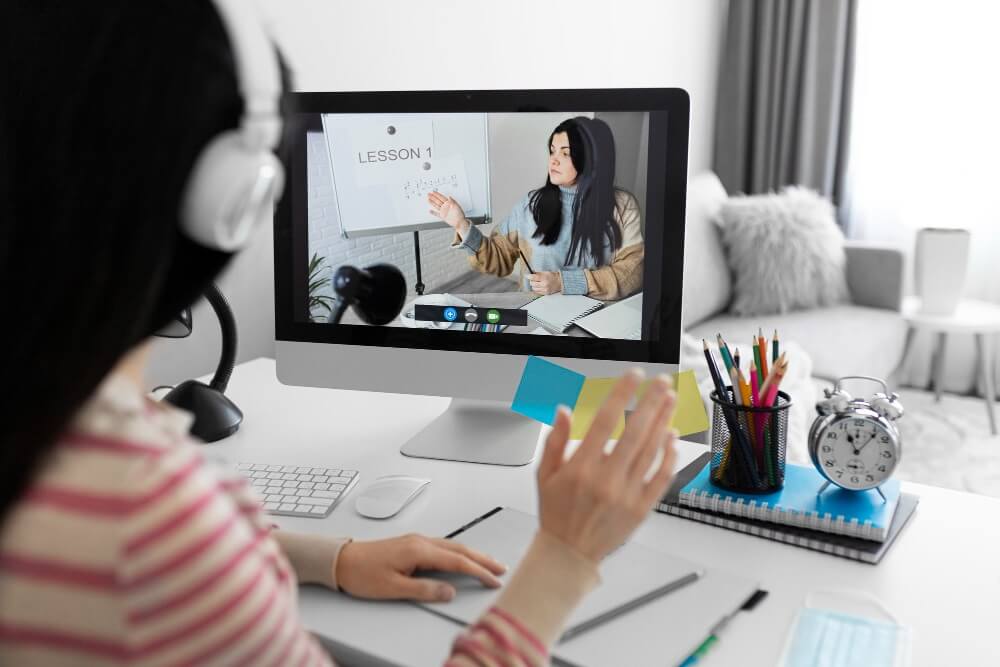As we converse today, learning has gone beyond being inside a classroom with a teacher as the facilitator. Both e-learning and Learning Management Systems (LMS) are chosen by more and more educational institutions to experience advanced ways of learning.
As such, industries related to e-learning and LMS are experiencing new growth and can be expected to progress over the next few years.
LMS, in simple terms, is an online destination for all things related to learning and training. Whether you’re developing an online course, managing corporate training sessions, or organizing resources in the classroom, an LMS allows easy creation, deployment, and tracking of content.
Here, you will find a brief on how an LMS is used and some simple tips on how you can use it to make learning more fun, organized, and effective for everyone involved.
Learning Management System (LMS) 101: Understanding the Concept
To keep it simple, an LMS is a form of software that aids a person in administration, delivery, tutorial-based training, or educational courses. It basically acts as a home page through which you can post lessons, presentation videos, assign courses, interact with learners, and track their progress.
In a way, an LMS simplifies things for the teacher who needs to add value to the class or the company that needs to train its employees. It allows learners to learn anytime, any time. This makes learning a lot more flexible and, hence, convenient.
Furthermore, with tools for quizzes and assessment and integration of reporting tools, you can monitor the performance of your learners or areas that may require fine-tuning.
These are some of the popular LMSs in the market today:
- Google Classroom

- Brightspace
- Blackboard Learn
- Moodle
- TalentLMS
How to Use LMS Effectively?
Here are the top five LMS best practices that can help make LMS work for you and improve the learning process for all learners. This may be a completely new experience for you, or perhaps this is not your first time engaging with an LMS. Either way, there are certain things that, if done or considered, can benefit your learning management system experience tremendously.
Tip 1: Subcategorize Your Content to Make it Accessible
One of the main ideas for effective usage of an LMS is to structure the content in a proper way for the learners. Break down courses into clear sections or modules, and use consistent labels for assignments, quizzes, and resources.
Clean and easy-to-read designs allow learners not to get distracted or confused and to simply concentrate on the study material. Another form consists of using something like a folder, checklist, or progress bar to show learners what comes next in the course. The less they have to search to find what they need, the more involved learners will be.
Tip 2: Use Interactive Features
What an LMS gives you is more than just a platform to share or upload lessons. It has features that make learning more fun. Play quizzes and polls, as well as post questions in forums, to increase engagement and keep learners’ attention focused.
These features also aid in establishing what has been said and assist in the social and interactive parts, which is adequate in online courses. You can also add some multimedia elements such as videos, podcasts, and many others, and you can even use interactive simulations to align with the different learning types.
Tip 3: See the Progress Through Analytics

Another compelling feature of an LMS is the possibility to monitor learners’ progress in real-time mode. Utilize analytics that the platform provides, showing how learners engage and how well they perform, what they find challenging, and what content is popular.
It’s also crucial to look at this information on a frequent basis so as to discover where you may find holes in the learning process or where learners may require more assistance. This information can also be used to make necessary changes in the content of learning and the speed at which learning is implemented, as well as to create better results by making better decisions.
Tip 4: Automate Tasks to Save Time
Organize yourself and your work using the automation. You can create due dates on your assignments and then have the assignments posted at some certain time, as well as use auto-grading features on quizzes and assessments.
It saves a lot of your time and can be used for much more relevant activities, such as communication with learners or enhancement of the courses. At the same time, you can control learners without constant supervision. That way, the class running will be smooth, and your workload will also get a lot easier because most of the processes will be done by the system.
Tip 5. Improve Communication and Collaboration

A good LMS supports not only the solo learner but also the learner who learns in a team. It’s always better to allow learners to interact in a course by using discussion boards, chat options, and group assignments, including idea sharing.
It fosters group working and enables learners to learn from one another and not only from what is in the course. Communication can also alert the instructor immediately and allow them to understand the whole learning session, foster participation, and increase retention.
Wrapping Up: Go Beyond the e-Learning Basics with LMS
With all of what LMS has to offer, we know that this technology helps improve the learning process– for both the teacher and the learner. Thus, if you are a teacher and your content is well organized, information is truly interactive, statistics are used where appropriate, certain processes are automated, and learners can communicate well, the learning environment is conducive to success.
When harnessing the full capacity of an LMS, always keep the principle in mind that the learning process is a dynamic activity, with lots of room for change if necessary. When you apply the right approaches to it, you can improve your e-learning even further to foster the kind of preparedness your audience needs for success.